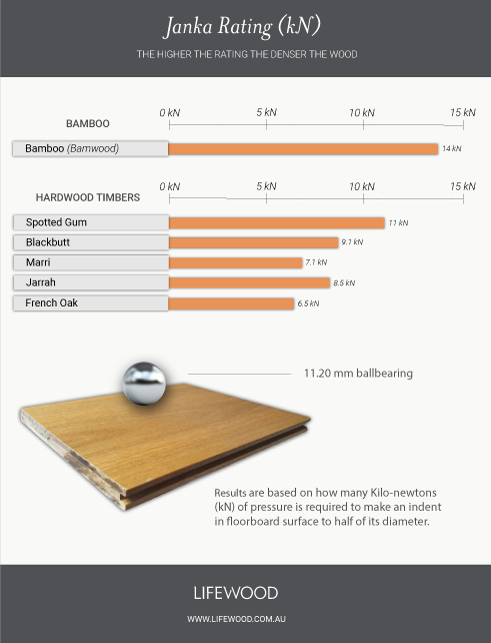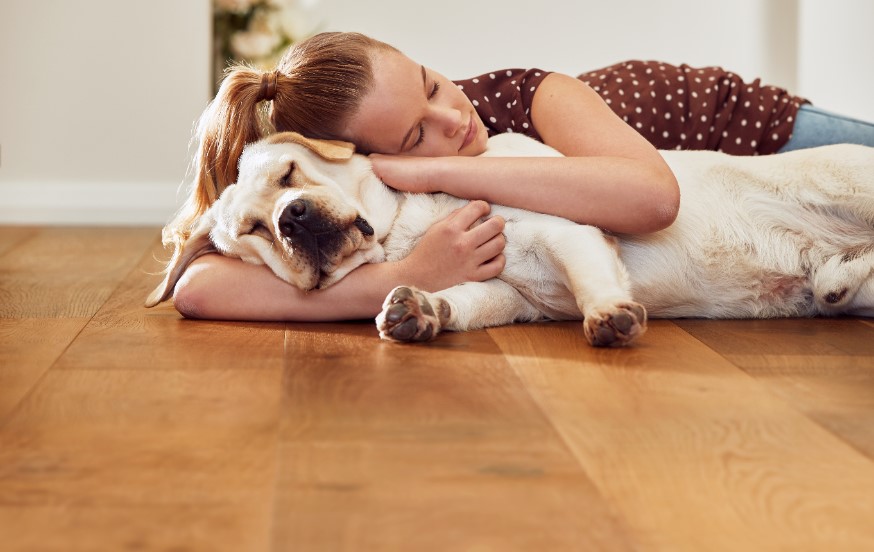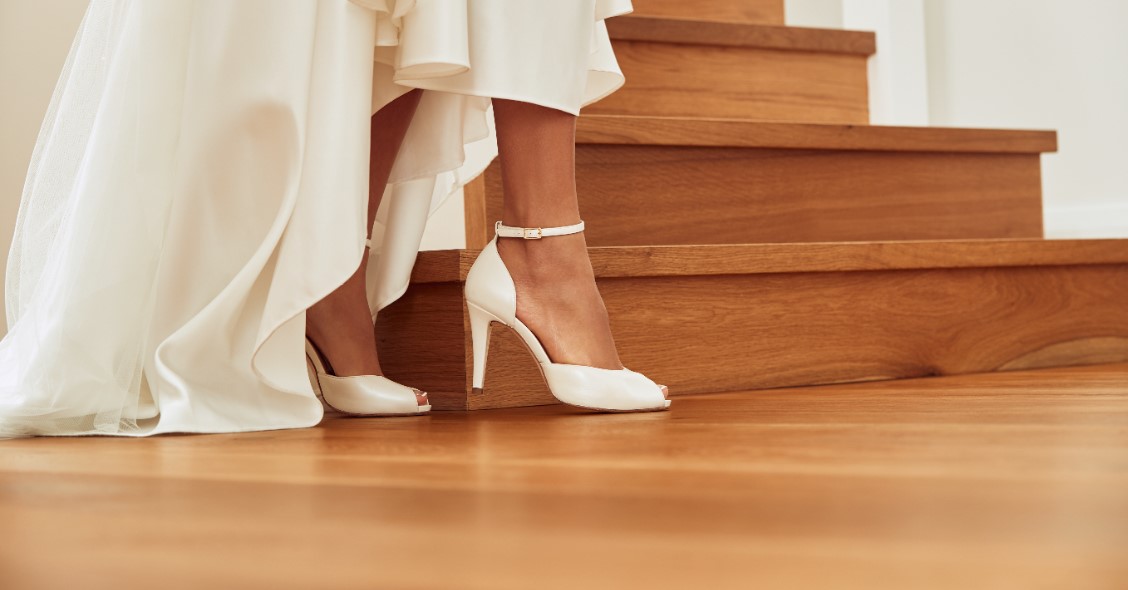How To Test Timber Floor Durability With The Janka Hardness Rating
What is Janka Rating?
This is done by testing the floor’s resistance by measuring how much pressure is needed to embed an 11.28 millimetre ballbearing halfway into the boards surface. The result of the test will give you a measurement of how much force it took to make this protrusion in the wood. The higher the result the harder the wood.
In Australia, we measure using kilonewtons (kN), but in other parts, you can see results in pounds-force (lbf) and kilograms-force (kgf).
What is a good Janka hardness rating?
We would suggest avoiding any floor that’s anything under 5.5 on the Janka scale.
The Janka rating of your new floor should be considered in your decision, but a more important factor is the lifestyle and activities of the people living on it. Large families with kids, homes with large pets, and commercial locations should opt for a higher Janka rating floor due to higher traffic and probability of denting.
For these situations, we would suggest Bamboo flooring which has developed a reputation for being very durable with a rating of 14.7.
Can coating increase Janka rating for hardwood floors?
The coating of a timber floor won’t make your floor harder but it will affect how much your floor will show dents and scratches.
Higher gloss levels will highlight these imperfections much more in comparison to a satin or matte gloss level. Another thing to consider is that most coatings, when scratched, will create a white mark on the floor. These scratches will be more visible on darker floors due to the colour contrast of the dark floor and light scratch.
French Oak hardwoods aren’t as hard as the Australian timbers but by putting a lower gloss coating on them you’re able to mask the appearance of small dents and imperfections. Darker coloured floors like Jarrah with a high gloss are much more prone to show imperfections than a lighter timber with a lower gloss.
Important factors which affect scratching of timber floor:
- Gloss level
- Colour of the timber
- Durability of the coating
- Grade of the timber
These factors, along with your household activities, should all be considered when choosing the right floor for your home.
Here at Lifewood we’ve designed a unique showroom experience designed to help you perfect floor for your family and lifestyle.
Is the Janka Scale relevant to the floor’s scratch resistance
As mentioned earlier, the Janka rating is a test designed to test the hardness of the floor and its susceptibility to denting. The results will not reflect how your floor will hold up when it comes to surface scratching and daily wear and tear.
Scratch resistance is related to the type of protective coating used on a timber floor as appose to the density of the wood used to make the floorboard.
All of our floors have a 9 layered polyurethane coating on all 6 sides of every board.
Why is it called Janka rating?
Will my dog scratch my timber floor?
With dogs, make sure you always keep their claws trimmed to prevent any surface scratching of your floor.
Depending on the how sharp and strong the dog’s claws are they could scratch through the coating and manage to scratch the wood itself.
Can I wear Stiletto heels on timber flooring?
The most common enemy to a timber floor is the stiletto heel. Make sure you replace the protective point on your heel regularly to prevent damage.
Wider heels are typically no problem on solid timber or our Stabilised Solid technology, but be careful if you have engineered timber with a soft pine or ply substrate. Always do a test in a less visible area such as a pantry or closet.
Should I consider the Janka rating when choosing a hardwood floor?
People buy real timber because of its natural look, enduring beauty and ability to look good even if it’s not perfect. The imperfections of the wooden floor are often what adds to its natural character.
A well-made timber floor can be sanded and polished multiple times allowing you to hit the refresh button throughout the floors lifetime.
Yes, consider the hardness of your floor, but more importantly, choose a floor which you and your family will want to live on for a lifetime.
The Janka Rating Isn’t an Exact Measurement For Every Board
The growth rate of a tree will vary from year to year and area to area. Therefore, the rating is based on an average number of tests under a large number of hardwood samples. It is likely that your floor will be made up of multiple trees that come from different areas and have different growing conditions.
The Janka rating is an average and every individual board won’t have the exact same rating.
It’s important to always take as many precautions as possible to care for your floor as it’s a living investment.
If you’re looking for a premium quality hardwood timber flooring solution that can be installed in just days, come and walk on our large selection of Australian timber, and French oak flooring today.
We’re located on 18 Hector Street West, Osborne Park Perth.



